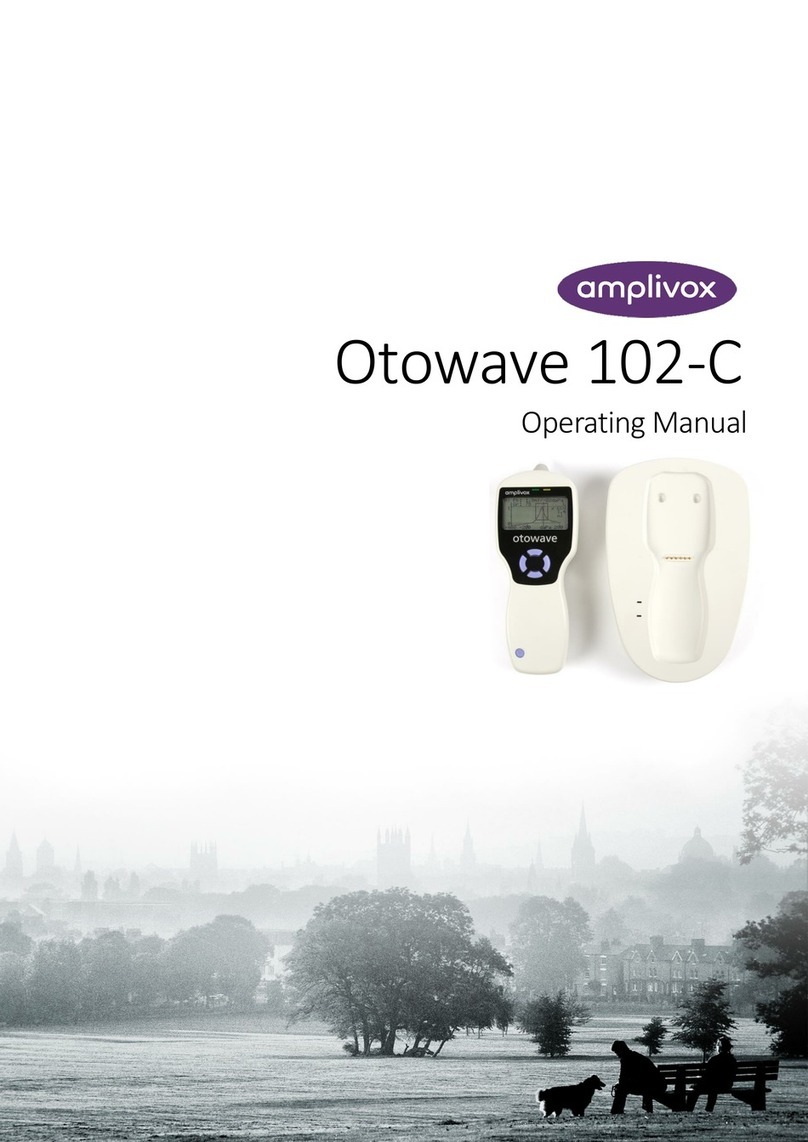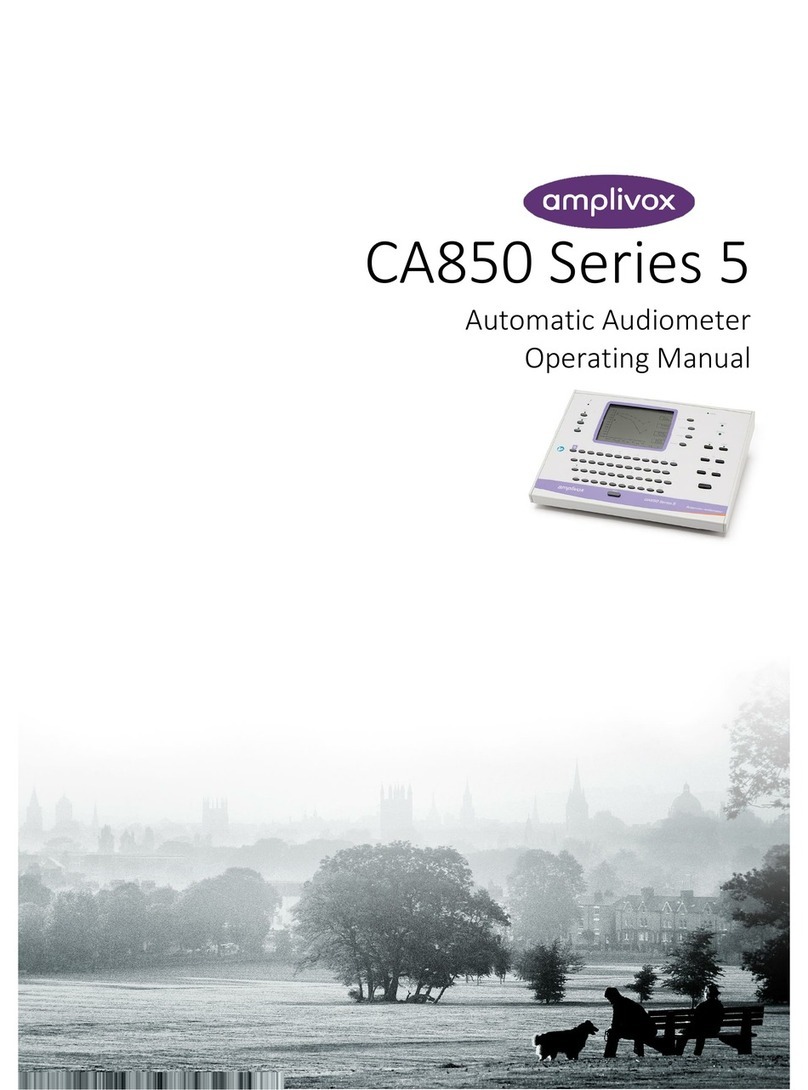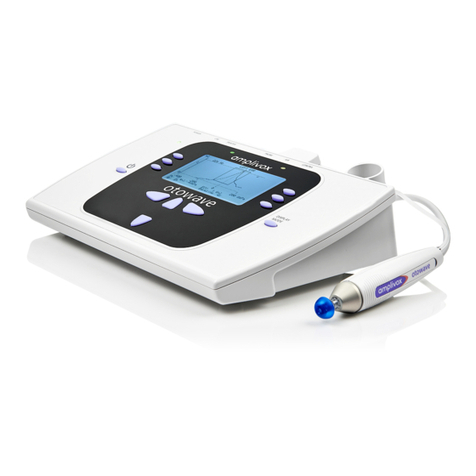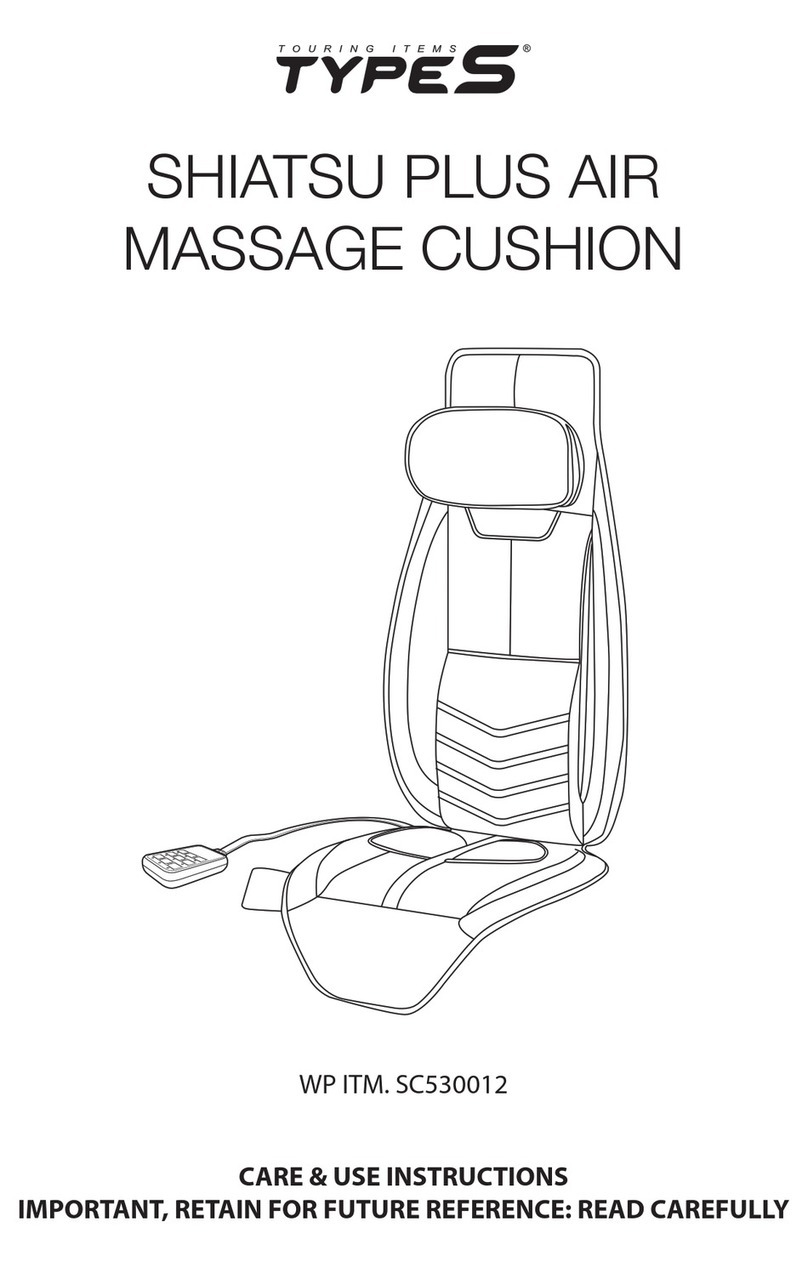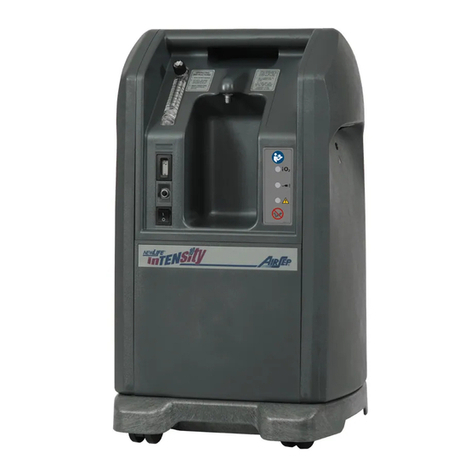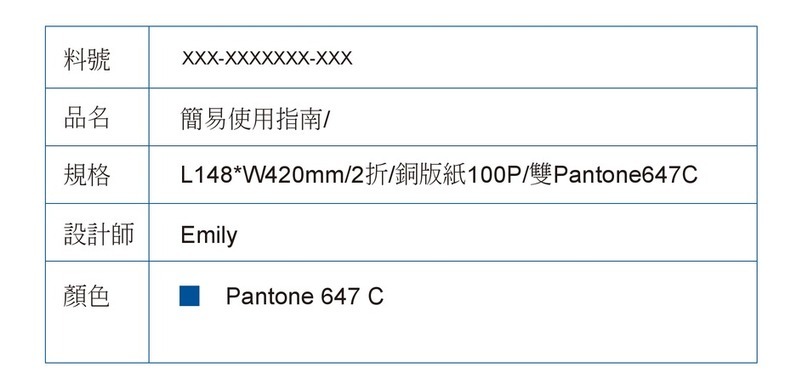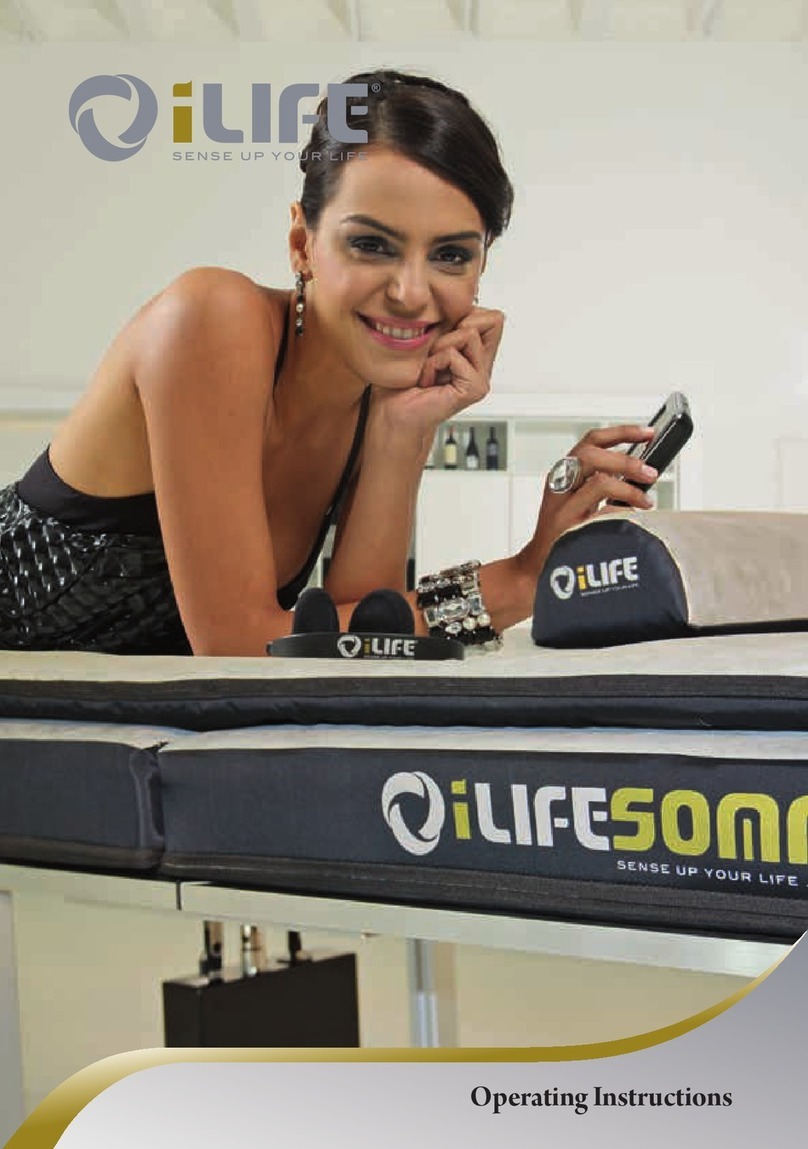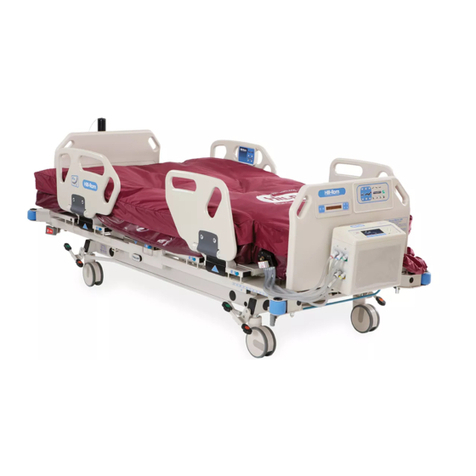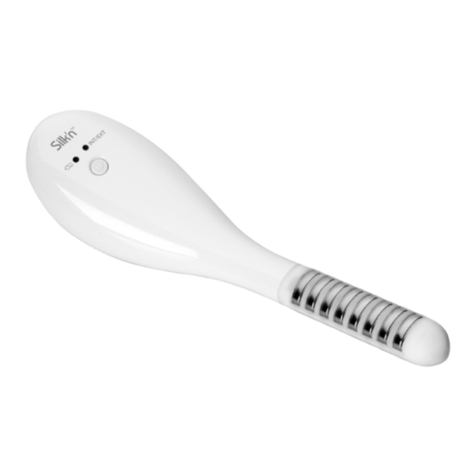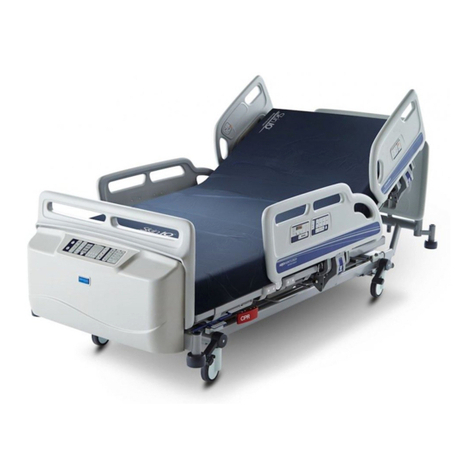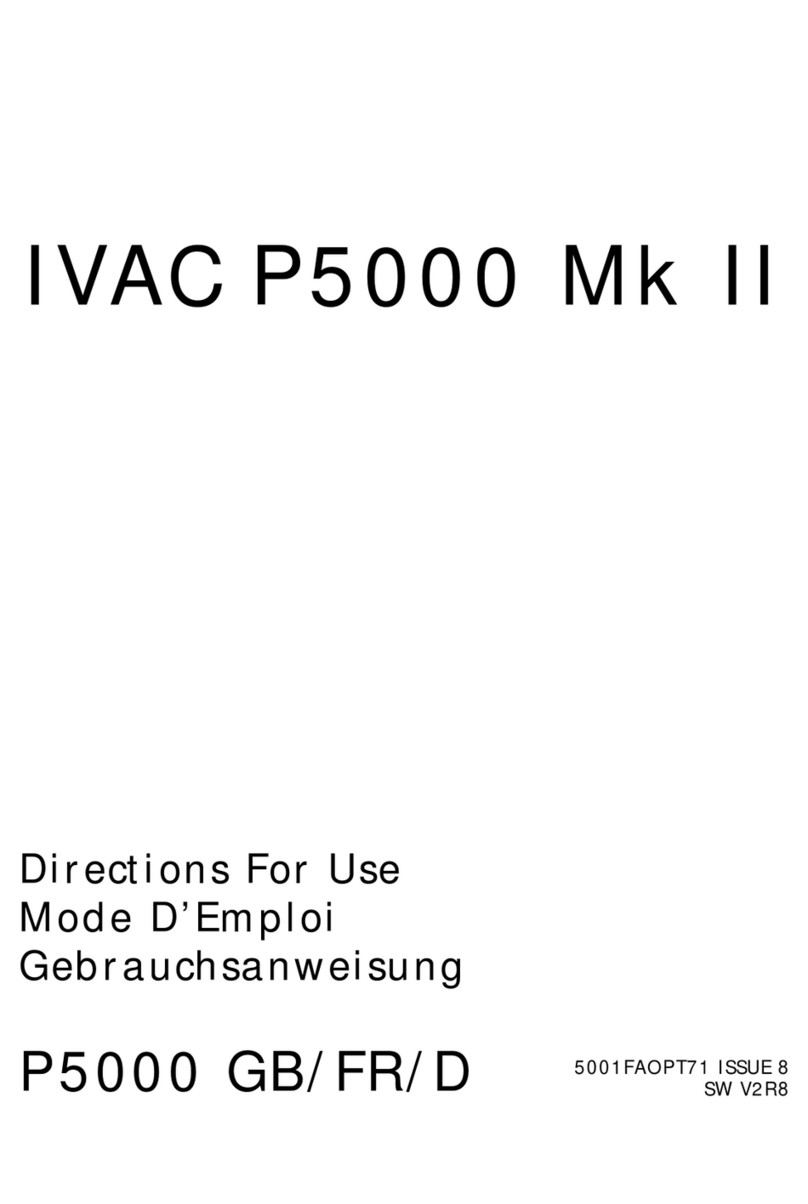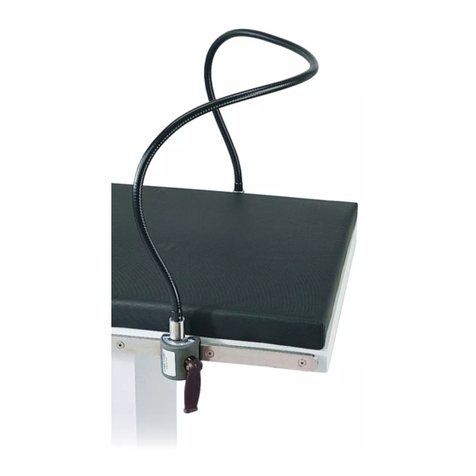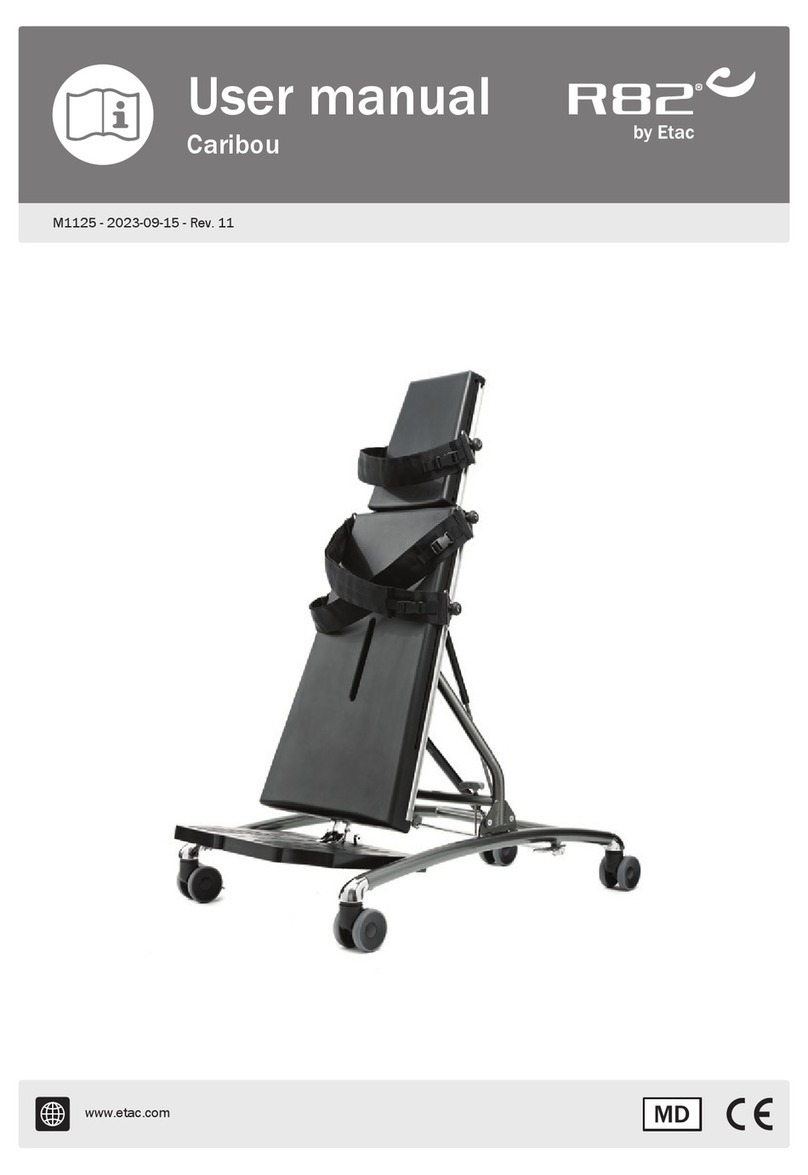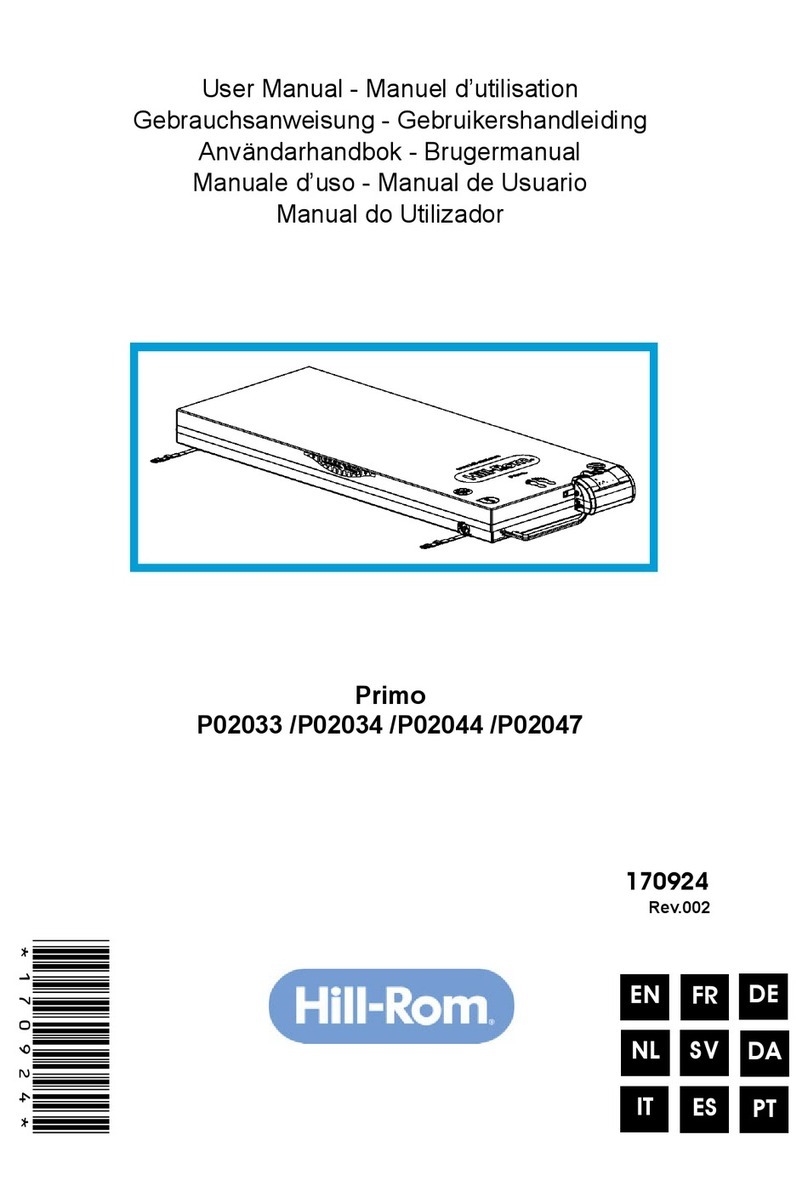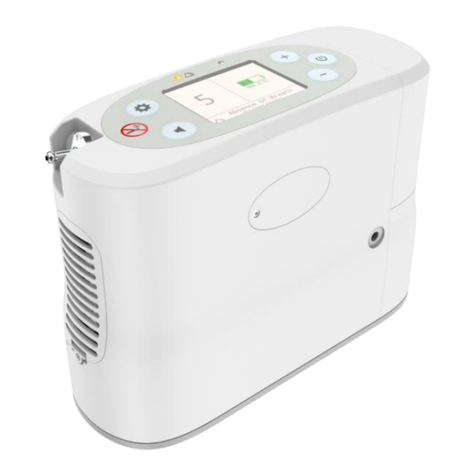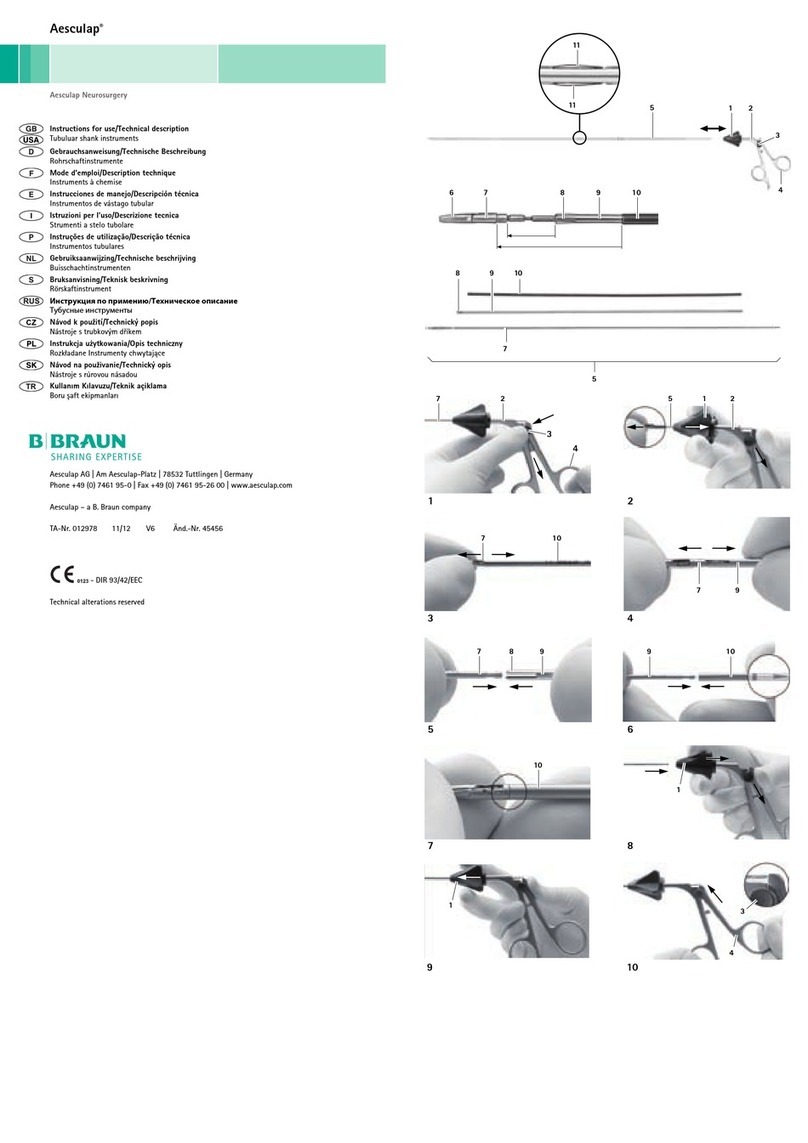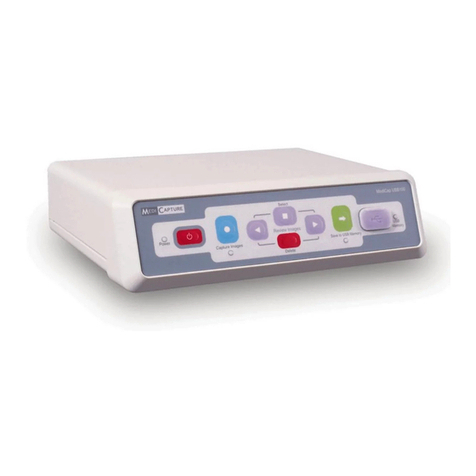AmpliVox Otosure User manual

Otosure
Operating Manual

i
D-0116492-B (OM022) –Otosure Operating Manual
ABOUT THIS MANUAL
READ THIS OPERATING MANUAL BEFORE ATTEMPTING TO USE THE INSTRUMENT.
This manual is valid for the Otosure (applies from serial number 58000 and Audibase version 5.5 onwards).
This product is manufactured by:
Amplivox Ltd.
10393 West 70th Street
Eden Prairie
MN 55344
United States
Amplivox Ltd.
3800 Parkside, Solihull Parkway,
Birmingham Business Park,
Birmingham, West Midlands,
B37 7YG
United Kingdom
www.amplivox.com
For all enquiries please contact us under:

ii
D-0116492-B (OM022) –Otosure Operating Manual
TABLE OF CONTENTS
1. INTRODUCTION.................................................................................................................................................. 4
1.1. THANK YOU...........................................................................................................................................................4
1.2. INTENDED APPLICATIONS .........................................................................................................................................4
1.3. CONTRADICTIONS................................................................................................................................................... 4
1.4. STANDARD AND OPTIONAL COMPONENTS....................................................................................................................4
1.5. WARNINGS ...........................................................................................................................................................5
2. PRINCIPLES OF OPERATION ................................................................................................................................ 6
2.1. OTOSCOPIC EXAMINATION .......................................................................................................................................6
2.2. PRINCIPALS OF PURE TONE AUDIOMETRY ...................................................................................................................6
2.3. AUDIOMETRY PREPARATION .....................................................................................................................................6
3. UNPACKING AND INSTALLATION........................................................................................................................ 8
3.1. GENERAL..............................................................................................................................................................8
3.2. MARKINGS............................................................................................................................................................8
3.3. SAFETY INSTRUCTIONS............................................................................................................................................. 9
3.3.1. General ..................................................................................................................................................... 9
3.3.2. Cautions –General ................................................................................................................................... 9
3.3.3. Environmental factors ............................................................................................................................ 10
3.3.4. Electrical and electrostatic safety........................................................................................................... 10
3.3.5. Electromagnetic compatibility (EMC) ..................................................................................................... 11
3.3.6. Explosion hazards ................................................................................................................................... 11
3.3.7. Measuring Security ................................................................................................................................. 11
3.3.8. Miscellaneous ......................................................................................................................................... 11
3.3.9. Use of equipment after transport and storage....................................................................................... 12
3.4. CONNECTIONS .....................................................................................................................................................12
3.5. HARDWARE INSTALLATION .....................................................................................................................................12
4. INSTALLING SOFTWARE & OPERATIONAL CHECK ..............................................................................................13
4.1. GENERAL ............................................................................................................................................................13
4.2. INSTALLATION...................................................................................................................................................... 13
4.3. UNINSTALLING THE OTOSURE PROGRAM ..................................................................................................................13
4.4. OPERATIONAL CHECK............................................................................................................................................13
5. USING THE OTOSURE ........................................................................................................................................15
5.1. EQUIPMENT PREPARATION ..................................................................................................................................... 15
5.2. STARTING THE SOFTWARE.......................................................................................................................................15
5.3. AVAILABLE TEST MODES ........................................................................................................................................15
5.3.1. Manual Testing....................................................................................................................................... 15
5.3.2. Computer Testing ................................................................................................................................... 15
5.3.3. Mixed Testing ......................................................................................................................................... 16
5.4. INITIATING A TEST ................................................................................................................................................16
5.5. CONTROL BUTTONS..............................................................................................................................................17
5.6. CONTROL -PC KEYBOARD AND MOUSE...................................................................................................................17
5.7. MANUAL TESTING................................................................................................................................................17
5.8. COMPUTER TESTING .............................................................................................................................................19
5.9. SINGLE-FREQUENCY TESTING ..................................................................................................................................20

iii
D-0116492-B (OM022) –Otosure Operating Manual
5.10. MIXED-MODE TESTING..........................................................................................................................................20
6. OPTIONS AVAILABLE TO SET-UP........................................................................................................................21
6.1. GENERAL ............................................................................................................................................................21
6.2. MENU COMMANDS..............................................................................................................................................21
7. TROUBLESHOOTING ..........................................................................................................................................22
7.1. GENERAL ............................................................................................................................................................22
7.2. NO INSTRUMENT FOUND....................................................................................................................................... 22
7.3. NO RESPONSE FROM PATIENT ................................................................................................................................ 22
7.4. RESPONSE SWITCH HELD ON..................................................................................................................................23
7.5. ERRATIC PATIENT RESPONSE...................................................................................................................................24
7.6. EXIT OTOSURE WITH NO RESULTS........................................................................................................................... 24
7.7. USB LEAD DISCONNECTED.....................................................................................................................................25
8. ROUTINE MAINTENANCE...................................................................................................................................26
8.1. GENERAL MAINTENANCE PROCEDURES ....................................................................................................................26
8.2. AUDIOMETER MAINTENANCE..................................................................................................................................26
8.3. HEADSET MAINTENANCE ....................................................................................................................................... 27
8.4. ACCESSORIES/REPLACEMENT PARTS .........................................................................................................................27
8.5. REPAIR...............................................................................................................................................................27
8.6. WARRANTY.........................................................................................................................................................28
8.7. CALIBRATION AND RETURN OF THE INSTRUMENT........................................................................................................28
8.8. GUARANTEE........................................................................................................................................................ 29
9. TECHNICAL SPECIFICATIONS..............................................................................................................................30
9.1. STANDARDS AND REGULATORY................................................................................................................................ 30
9.2. INPUT/OUTPUT ...................................................................................................................................................30
9.3. AUDIOMETRIC .....................................................................................................................................................30
9.4. EARPHONE SOUND ATTENUATION CHARACTERISTICS ..................................................................................................30
9.5. PHYSICAL &ENVIRONMENTAL.................................................................................................................................30
10. EMC GUIDANCE & MANUFACTURER’S DECLARATION...................................................................................32
11. USE WITH NON-MEDICAL ELECTRICAL EQUIPMENT ......................................................................................37

4
D-0116492-B (OM022) –Otosure Operating Manual
1.INTRODUCTION
1.1. THANK YOU
Thank you for purchasing an Amplivox audiometer. The Otosure is a compact, automatic air-conduction
screening audiometer, driven and controlled by a computer (PC). It provides a cost-effective solution for
today's health care environment.
The Otosure is used with the Amplivox Audibase software, which allows electronic storage of audiometric
test records on a PC, application of audiogram categorisation schemes, printing of audiograms and data
exchange with other PC applications.
This operator's manual enables you to take full and safe advantage of the features offered by the Otosure
audiometer. Therefore, PLEASE READ IT THOROUGHLY before using the audiometer.
1.2. INTENDED APPLICATIONS
This instrument is designed for use by trained personnel only, such as audiologists, ENT surgeons, doctors,
general practitioners, hearing aid dispensers, child health professionals and hearing healthcare professionals
with a similar level of education. It is not recommended to utilize the equipment without the necessary
knowledge and training.
1.3. CONTRADICTIONS
Always visually inspect the outer ear and the external auditory canal for abnormalities before testing. Testing
should not be performed on patients in the following items is applicable.
1. The presence of other sensitivity to loud sounds may contraindicate testing when high intensity stimuli
are used.
2. Recent outer ear surgery.
1.4. STANDARD AND OPTIONAL COMPONENTS
Shipping documentation will reference the stock number quoted above, and images of the parts alongside the
relevant stock number are available on the Amplivox website (www.amplivox.com). The required fitting
instructions are supplied with each part.
STANDARD COMPONENTS
Otosure audiometer
8508019
Audiometric headset (DD45)
8509615
Patient response switch
8011155
HBA audiometric headband
8010882
Cable USB A to USB B (2.0 m)
8011241
Carrying case
8004651
Calibration certificate
USB with Audibase Software and
manuals

5
D-0116492-B (OM022) –Otosure Operating Manual
OTHER COMPONENTS TO REORDER
Audiocups (noise reducing earphone enclosures)
8010855
Headband (standard
headphone)
8010840
Audiocup ear cushion
8010835
Earphone cushion
8010857
Audiocup headband
8507381
Earphones DD45 *
8010876
Audiocup headband cover
8010834
Headset lead
8010822
Booth Leads
851095
Accessories marked * require calibration with the specific audiometer to be used. Do not attempt to
use these accessories until the audiometer has been calibrated to match their characteristics.
Shipping documentation will reference the stock number quoted above, and images of the parts alongside
the relevant stock number are available on the Amplivox website (www.amplivox.com). The required fitting
instructions are supplied with each part.
1.5. WARNINGS
Throughout this manual, the following meanings of warnings and cautions apply:
The WARNING label identifies conditions or practices that may present danger
to the patient and/or user.
The CAUTION label identifies conditions or practices that could result in damage
to the equipment.
WARNING
CAUTION

6
D-0116492-B (OM022) –Otosure Operating Manual
2.PRINCIPLES OF OPERATION
2.1. OTOSCOPIC EXAMINATION
A suitably-qualified health care professional should perform a thorough otoscopic examination to establish that
the condition of the ear is suitable for the test options selected and that no contraindications are present. The
latter would include obstruction of the external ear canal due to excessive wax and/or hairs, both of which
would need to be removed. This is required to ensure that the probe tone delivered by the probe are able to
reach the ear drum and are not reflected by cerumen or debris and thereby alter the test result.
2.2. PRINCIPALS OF PURE TONE AUDIOMETRY
Ideally, hearing tests are conducted in a soundproof room. The purpose of pure tone audiometry is to measure
the patient’s hearing threshold which is then compared to the hearing threshold of an average normal hearing
person. The examination starts with air conduction on the ear with better hearing, or if not specified differently,
on the right ear. The BSA (British Society of Audiology) recommends starting the test at 1000 Hz to then next
measure the higher frequencies. When done with the high frequencies 1000 Hz shall be retested and to then
continue with the lower frequencies.
2.3. AUDIOMETRY PREPARATION
Refer to the various audiometric standards and other relevant publications for guidance on audiometric testing.
Ambient Conditions
Audiometric testing should always be performed in quiet conditions (e.g. a quiet room or an acoustic booth).
The optional Audiocups can provide an additional level of isolation from ambient noise. For further
explanation on permissible ambient noise levels, please refer to the audiometry standard ISO 6189.
Test System Arrangement
The schematic diagram below shows a typical example of the use of audiometric test equipment. The
audiometer is located on the desk of a seated operator as shown.
The patient is seated in front of the desk facing away from the operator. The patient wears a headset (see
below) and responds to test stimuli by use of a hand-held switch which is also connected to the instrument.
Operator
Otosure
Audiometer
Computer (e.g. Tablet/Laptop)
Patient, wearing headset
Headset lead
Response switch & lead

7
D-0116492-B (OM022) –Otosure Operating Manual
Headset
The headset must be fitted by a qualified person to ensure a proper seal and comfortable fit. The leads from
the headset are connected to the instrument and the headset is then fitted to the patient.
Patient Instructions
The patient is given the following instructions: “Press and then release the response switch when a tone is
heard”.

8
D-0116492-B (OM022) –Otosure Operating Manual
3.UNPACKING AND INSTALLATION
3.1. GENERAL
Please check the contents of the shipping carton against the delivery note to make sure that all items ordered
have been included. If anything is missing, please contact the distributor who supplied the audiometer or
Amplivox if purchased directly.
Please retain the carton and packaging as the instrument will need calibrating on an annual basis and should
be returned to Amplivox in its original shipping carton.
For supply in US only: Federal Law restricts this device to sale by or on the order of a licensed medical
professional.
3.2. MARKINGS
The following markings can be found:
Symbol
Explanation
Type B applied parts. According to IEC 60601-1.
Patient applied parts that are not conductive and can be immediately released from the
patient.
Refer to instruction manual.
WEEE (EU-directive)
This symbol indicates that when the end-user wishes to discard this product, it must be
sent to separate collection facilities for recovery and recycling. Failing to do so may
endanger the environment.
The CE-mark indicates that Amplivox Ltd. meets the requirements of Annex II of the
Medical Device Directive 93/42/EEC. TÜV Product Service, Identification No. 0123,
has approved the quality system.
Serial number.
Date of manufacture.
Manufacturer.
Keep dry.
Transport and storage humidity range.
CAUTION

9
D-0116492-B (OM022) –Otosure Operating Manual
Transport and storage temperature range.
Logo.
3.3. SAFETY INSTRUCTIONS
3.3.1. GENERAL
The following safety precautions must be observed at all times. General safety precautions must be followed
when operating electrical equipment. Failure to observe these precautions could result in damage to the
equipment and injury to the operator or patient.
The employer should instruct each employee in the recognition and avoidance of unsafe conditions and the
regulations applicable to his or her work environment to control or eliminate any hazards or other exposure to
illness or injury.
Amplivox Ltd. is aware that safety rules within individual organizations vary. If a conflict exists between the
instructions in this manual and the rules of the organization using this instrument, the more stringent rules
should take precedence.
The Otosure is intended to be used by hearing healthcare professionals (i.e. ENT doctors, audiologists), nurses
or technicians who have been trained in the proper use of the device.
3.3.2. CAUTIONS –GENERAL
If the system is not functioning properly, do not operate it until all necessary repairs are made and the unit is
tested and calibrated for proper functioning in accordance with Amplivox’s specifications.
Do not drop or in any other way cause undue impact to this device. If the instrument is damaged, return it to
the manufacturer for repair and/or calibration. Do not use the instrument if any damage is suspected.
This product and its components will perform reliably only when operated and maintained in accordance with
the instructions contained in this manual, accompanying labels, and/or inserts. A defective product should not
be used. Make sure all connections to external accessories are secured properly. Parts which may be broken
or missing or are visibly worn, distorted, or contaminated should be replaced immediately with clean, genuine
replacement parts manufactured by or available from Amplivox Ltd.
Equipment is not user repairable. Repairs must be performed by an authorized service representative only.
No modifications of the equipment are allowed by anyone other than a qualified Amplivox Ltd. representative.
Modification of the equipment could be hazardous.
Amplivox Ltd. will make available on request circuit diagrams, component part lists, descriptions, calibrations
instructions, or other information that will assist authorized service personnel to repair those parts of this
instrument that are designated by Amplivox Ltd. as repairable by service personnel.
CAUTION

10
D-0116492-B (OM022) –Otosure Operating Manual
No parts of the equipment can be serviced or maintained while in use with the patient.
Connect only accessories purchased from Amplivox Ltd. to the Otosure. Only accessories which have been
stated by Amplivox Ltd. to be compatible are allowed to be connected to the device or cradle.
3.3.3. ENVIRONMENTAL FACTORS
Use and store the instrument indoors only. It is recommended that the instrument
be operated within an ambient temperature range of 15 °C / 59 °F to 35 °C / 95 °F
and in relative humidity between 30 % and 90 % (non-condensing).
Do not use the device in the presence of fluid that can come into contact with any of the electronic components
or wiring. Should the user suspect fluids have contacted the system components or accessories, the unit
should not be used until deemed safe by an authorized service technician.
3.3.4. ELECTRICAL AND ELECTROSTATIC SAFETY
Before performing any service to the insert earphones you must uncouple the
Otosure transducers from the patient.
Do not touch the contacts on the back of the instrument and the patient at the
same time. The consequence could be a too high leakage current to the patient.
Do not open the case of the instrument. Refer servicing to qualified personnel.
This equipment is intended to be connected to other equipment thus forming a Medical Electrical System.
External equipment intended for connection to signal input, signal output or other connectors must comply with
the relevant product standard e.g. IEC 60950-1 for IT equipment and the IEC 60601-series for medical
electrical equipment. In addition, all such combinations –Medical Electrical Systems –must comply with the
safety requirements stated in the general standard IEC 60601-1, (edition 3.1), clause 16. Any equipment not
complying with the leakage current requirements in IEC 60601-1 must be kept outside the patient environment
i.e. at least 1.5m from the patient support or must be supplied via a separation transformer to reduce the
leakage currents. Any person who connects external equipment to signal input, signal output or other
connectors has formed a Medical Electrical System and is therefore responsible for the system to comply with
these requirements. If in doubt, contact a qualified medical technician or your local representative. When the
instrument is connected to a PC, or other similar items, beware of not touching the PC and patient
simultaneously.
A Separation Device (isolation device) is needed to isolate the equipment located outside the patient
environment from the equipment located inside the patient environment. In particular such a Separation Device
is required when a network connection is made. The requirement for the Separation Device is defined in IEC
60601-1 clause 16.
CAUTION
WARNING
CAUTION

11
D-0116492-B (OM022) –Otosure Operating Manual
3.3.5. ELECTROMAGNETIC COMPATIBILITY (EMC)
Although the instrument fulfills the relevant EMC requirements, precautions
should be taken to avoid unnecessary exposure to electromagnetic fields, e.g.,
from mobile phones, etc. If the device is used adjacent to other equipment it
must be observed that no mutual disturbance appears. Please also refer to the
appendix regarding EMC.
3.3.6. EXPLOSION HAZARDS
Risk of explosion.
Do not use in the presence of flammable anesthetics or other gases.
Do NOT use in the presence of flammable gaseous mixtures. Users should
consider the possibility of explosions or fire when using this device in close
proximity to flammable anesthetic gases.
Do NOT use the Otosure in a highly oxygen-enriched environment, such as a
hyperbaric chamber, oxygen tent, etc.
3.3.7. MEASURING SECURITY
To guarantee that the Otosure works properly, the instrument should be checked and calibrated at least once
a year. The transducers supplied with the audiometer are specifically calibrated with it; if these transducers
are changed recalibration will be required.
The service and calibration must be performed by an authorized service technician. If these checks are not
performed, EU Medical Device Directive (MDD) and other regulations may be violated and warranties may be
void.
The use of non-calibrated devices can lead to incorrect test results and is not advisable.
3.3.8. MISCELLANEOUS
Please note: DO NOT connect the Otosure hardware to the computer before the software has been installed!
Storage in temperatures below 0C /32F and above 50C /122F may cause permanent damage to the
instrument and its accessories.
Do not place the instrument next to a heat source of any kind.
Great care should be exercised when handling transducers, as rough handling, for example dropping onto a
hard surface may break or damage the parts.
Within the European Union it is illegal to dispose of electrical and electronic waste as unsorted
municipal waste. Electrical and electronic waste may contain hazardous substances and
therefore have to be disposed of separately. Such products will be marked with the crossed-
out wheelie-bin image shown to the left. User cooperation is important in order to ensure a
high level of reuse and recycling of electrical and electronic waste. Failure to recycle such
waste products in an appropriate way may endanger the environment and consequently the
health of human beings.
Outside the European Union, local regulations should be followed when disposing of the product after its end
of life.
CAUTION
WARNING

12
D-0116492-B (OM022) –Otosure Operating Manual
3.3.9. USE OF EQUIPMENT AFTER TRANSPORT AND STORAGE
Please make sure that the instrument is functioning correctly before use. If the instrument has been stored in
a cold environment (even for short period of time), please allow the instrument to become acclimatized. This
can take long time depending on the conditions (such as environmental humidity). You can reduce the
condensation by storing the instrument in its original packaging. If the instrument is stored under warmer
conditions than the actual use conditions no special precaution is required before use. Always ensure proper
operation of the instrument by following routine check procedures for audiometric equipment.
3.4. CONNECTIONS
The accessory terminals and connections are labelled to ensure correct identification and connection as
follows:
SOCKET TYPE
COLOUR CODE
CONNECTED PART
6.3mm jack
Blue
Air conduction headset (Left) *
6.3mm jack
Red
Air conduction headset (Right) *
6.3mm jack
Black
Patient response Switch *
USB Connector
N/a
Computer (via USB port)
Please note: Only connect the accessories supplied with the instrument or supplied by Amplivox or an
Amplivox distributor. These parts have been tested for use with the Amplivox Otosure audiometer for
compliance with the standards IEC 60601-1 and IEC 60601-1-2. The use of accessories other than those
specified may compromise compliance with these standards.
3.5. HARDWARE INSTALLATION
Refer to Section 11 for important information regarding the connection of non-medical electrical
equipment to medical electrical equipment.
The audiometer is powered and controlled by a computer (PC) using software supplied for this
purpose. This software must be installed before the audiometer is connected to the PC.
All other connections should be made before connecting the audiometer to the PC.
A USB cable is provided to connect the Otosure to a PC. The connected port on the PC must be to USB
specification 1.0 or 2.0. Connect the headset and the patient response switch to the Otosure and then make
the connection from the Otosure to the PC. No specific warm-up time is required although the device
registration to the PC might take a short time to complete.
Please note: Please refer to Section 4 for instructions on how to install the software and drivers, how to
carry out the first-time connection to a PC, and how to undertake a basic operational check to ensure the
audiometer is functioning correctly.

13
D-0116492-B (OM022) –Otosure Operating Manual
4.INSTALLING SOFTWARE & OPERATIONAL CHECK
4.1. GENERAL
This section describes the procedure for installing the Otosure operating software & associated device
drivers, undertaking the first-time connection of the Otosure audiometer and performing a basic operational
check to ensure that the instrument is working.
4.2. INSTALLATION
Installation is a two-stage process (please ensure both are completed):
1. Install the Otosure software on the PC
2. Install the device drivers to enable USB communication between the PC and the Otosure audiometer
Step 1: Install the Amplivox Otosure Software
The installation of the Otosure software is seamless and is installed as part of Audibase. Please refer to the
Audibase5.x user guide for step by step installation instructions.
Step 2: Install the USB Device Drivers
Please refer to “D-0115682”Guide to Installing Amplivox USB Drivers
4.3. UNINSTALLING THE OTOSURE PROGRAM
Uninstalling the Otosure program is achieved simply by navigating to the location where the software was
originally installed and deleting the file named “Otosure.exe”. There is no need to use the “Add or Remove
Programs” utility.
This will leave Audibase installed.
Please note: If more information about the uninstallation of the Audibase are required, please refer to
the Audibase5.x user guide.
4.4. OPERATIONAL CHECK
Connect the headphones and patient response switch to the Otosure audiometer, and connect the Otosure
audiometer to the PC via a USB cable. Start the Audibase application on the PC and enter new patient
details (refer to the Audibase user manual).
Start a test using the Launch Test button in the Audibase toolbar
Close any dialogue boxes in the Otosure window and select the Manual Test option:
Move the mouse pointer over the “Present” icon in the Otosure window and ensure a tone is heard from an
earphone. Use the arrow keys on the PC keyboard to change the level and frequency of the tone. Use the
“L” and “R” keys on the PC keyboard to switch between earphones.
Press the patient response switch and ensure that the “Response” icon in the Otosure window changes
colour to light green and returns to dark green when the switch is released.

14
D-0116492-B (OM022) –Otosure Operating Manual
The above will demonstrate the basic functionality of the audiometer. When closing the Otosure window
remember to use the “Edit > Cancel Insert/Edit” option or cancel toolbar button in Audibase to cancel the test
operation.

15
D-0116492-B (OM022) –Otosure Operating Manual
5.USING THE OTOSURE
5.1. EQUIPMENT PREPARATION
Connect the headset and the patient response switch to the Otosure and then make the connection from the
Otosure to the PC. No specific warm-up time is required although the device registration to the PC might
take a short time to complete.
5.2. STARTING THE SOFTWARE
Start the Audibase application, and with reference to the user manual either establish a new a patient, or
access and display details of an existing patient.
Use the left mouse button to click on the Launch Test icon in the Audibase toolbar.
Alternatively use the “Test > Launch Test” drop-down menu selection at the top of the Audibase window.
A new window will open for the Otosure software. If the patient has more than one set of audiometric results
stored in Audibase the most recent audiogram is transferred and displayed in the Otosure window.
The serial number and calibration date of the connected Otosure audiometer is shown at the bottom right of
the Otosure window along with the test type currently selected.
The test type last used is remembered; if this was a manual test the procedures may be followed; if this was
an automatic test the following dialogue box will be displayed:
To run the same automatic test using the same options (as last used)
simply click the “Start test” button and the test will commence.
If a manual test is required, or if the test options are to be modified,
click the “Modify” button which will close the dialogue box.
5.3. AVAILABLE TEST MODES
5.3.1. MANUAL TESTING
This allows the operator to use the Otosure to record hearing level thresholds using the computer’s keyboard
and mouse. The resulting audiometric data may then be transferred to the Audibase application.
5.3.2. COMPUTER TESTING
This is a method of automatic audiometry based on the Hughson and Westlake method and undertaken
automatically by the instrument. The level is increased in 5dB steps until a response is obtained from the
patient and decreased in 10 dB steps until no response occurs. The process is repeated until, depending
upon the criteria selected for recording a threshold, the instrument will record a threshold at that particular
frequency. The Otosure then continues to the next test frequency and so on to complete the test on both
ears.

16
D-0116492-B (OM022) –Otosure Operating Manual
The Otosure provides the facility to run this test at specified single frequencies and add the results into the
overall audiogram result. This feature is useful for situations where one particular
frequency has proved problematic.
5.3.3. MIXED TESTING
This is typically used when the automatic test has been unable to yield a threshold at one or more
frequencies. It is possible to perform a manual test (normally at just a few selected frequencies) to complete
an audiogram by adding thresholds to those already established.
5.4. INITIATING A TEST
Start the Audibase application, and with reference to the user manual either establish a new a patient, or
access and display details of an existing patient.
Use the left mouse button to click on the Launch Test icon in the Audibase toolbar.
Alternatively use the “Test > Launch Test” drop-down menu selection at the top of the Audibase window.
A new window will open for the Otosure software. If the patient has more than one set of audiometric results
stored in Audibase the most recent audiogram is transferred and displayed in the Otosure window.
The serial number and calibration date of the connected Otosure audiometer is shown at the bottom right of
the Otosure window along with the test type currently selected.
The test type last used is remembered; if this was a manual test the procedures may be followed; if this was
an automatic test the following dialogue box will be displayed:
To run the same automatic test using the same options (as last used) simply click the “Start test” button and
the test will commence.
If a manual test is required, or if the test options are to be modified, click the “Modify” button which will close
the dialogue box.

17
D-0116492-B (OM022) –Otosure Operating Manual
5.5. CONTROL BUTTONS
starts the selected automatic test
selects Computer test type
selects Manual test mode
selects test detail display
selects audiogram display
Sounds a test tone in Manual test mode when the mouse pointer is moved over this icon;
there is no need to click the mouse button.
The icon changes to this format while a tone is being presented
Please note: The present icon will also be displayed during automatic testing,
although use of the mouse as described above will have no effect when automatic testing
is performed.
Patient response indicator, displayed like this when the patient has not made a response.
The icon changes to this format when a response is made.
5.6. CONTROL - PC KEYBOARD AND MOUSE
Keyboard, “L” key: selects left ear in Manual test mode
Keyboard, “R” key: selects right ear in Manual test mode
Keyboard, key: increases the sound level in Manual test mode
Keyboard, key: decreases the sound level in Manual test mode
Keyboard, key: selects a lower tone frequency in Manual test mode
Keyboard, →key: selects a higher tone frequency in Manual test mode
Mouse, pointer: sounds the test tone when positioned over the present icon in Manual test
mode
Mouse, left button: selects Windows-based options as normal
Mouse, right button: in manual test mode only, plots a threshold
5.7. MANUAL TESTING
Click the Manual test button (the button will then be highlighted)
Alternatively use the “Test > Manual” drop-down menu selection at the top of the Otosure window. The
following screen is displayed:

18
D-0116492-B (OM022) –Otosure Operating Manual
Note the cursor positioned in left ear audiogram area indicating the current frequency and dBHL value (also
displayed at the bottom centre of the Otosure window).
Moving the mouse over the “Present” icon will sound the prescribed tone at this level and
frequency from the left earphone, and the “Present” icon will change to .
If the patient presses the response switch the “Response” icon will change from a dark green colour
to a light green colour .
To change the level of the presented tone, use the and arrow keys on the PC keyboard.
When confident that a consistent response has been elicited at a particular level the threshold may be
plotted on the screen by clicking the right mouse button. The numerical value of the threshold is added to the
appropriate text box above the audiogram. If an error has been made, simply plotting a different threshold at
the selected frequency will override any previous threshold.
To clear all thresholds from the audiogram use the “Test > Clear readings …” drop-down menu selection and
select the appropriate items to clear.
To change the frequency of the presented tone, use the and →arrow keys on the PC keyboard. Continue
plotting thresholds until all desired frequencies have been tested.
To select the right ear use the “R” key on the PC keyboard, and to return to the left ear use the “L” key.
Use the controls described above to build up a complete audiogram for the patient. Once satisfactorily
completed, click on “Exit” at the top of the Otosure window and confirm to exit Otosure. The Otosure window
will close and the Audibase window will display the test results. Refer to the Audibase user manual for
additional options, but it should be noted that the results must be saved in Audibase to be retained in the
database.

19
D-0116492-B (OM022) –Otosure Operating Manual
5.8. COMPUTER TESTING
Click the Computer test button (the button will then be highlighted)
Alternatively use the “Test > Computer” drop-down menu selection at the top of the Otosure window. A
screen is displayed but with the “Present” icon and cursor removed.
To run a full Computer test on both ears simply click the “Run selected test” button.
Alternatively use the “Test” drop-down menu option to select either a full test or a restricted test (for example,
limited to a single ear).
The Computer test will run according to the test options selected with the test status indicated at the bottom
left of the Otosure window. The “Present” icon will re-appear and indicate when tones are presented, and the
“Response” icon will change to light green when a patient response is made.
To view the traces of the presented tones select the “Show test detail” button:
Alternatively use the “View > Detail” drop-down menu option.
To view the audiogram thresholds select the “Show Audiogram” button:
Alternatively use the “View > Audiogram” drop-down menu option.
The order of frequencies tested, assuming that all frequencies are selected, are 1kHz, 1.5kHz, 2kHz, 3kHz,
4kHz, 6kHz, 8kHz, 500Hz, 250Hz and 125Hz.
The time available for the patient to respond is from the point the tone is presented to the beginning of the next
presented tone (approximately 2.3 seconds maximum). If a response is made within this time period a random
delay is then added to the time until the next tone is presented.
Once the test has been completed successfully the following dialogue box will be displayed:
If the test has not been completed successfully the following dialogue box will be displayed:
Table of contents
Other AmpliVox Medical Equipment manuals

